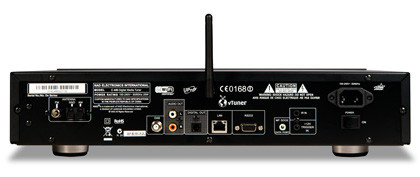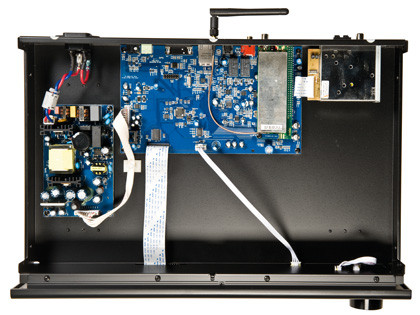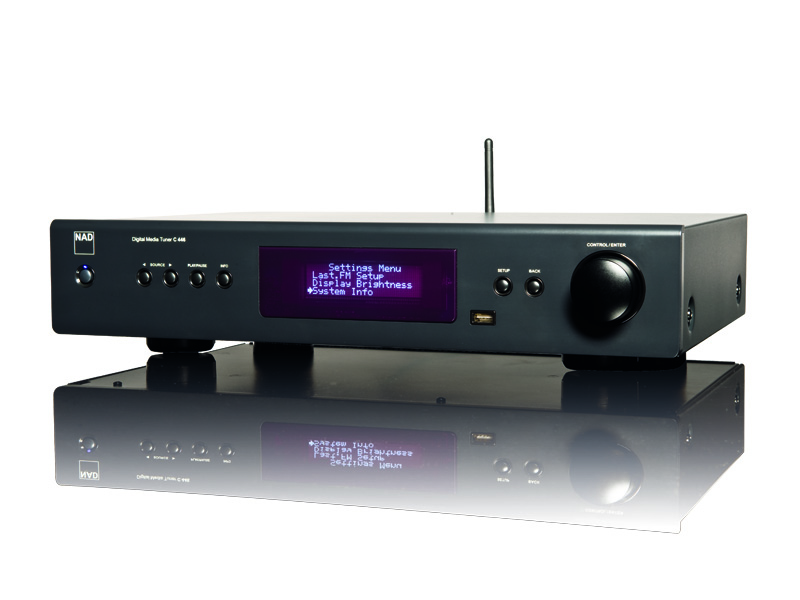TechRadar Verdict
Pros
- +
Basic and rudimentary, but it works well and sounds great
Cons
- -
Inability to handle sampling rates above 48kHz rather restricts its appeal
Why you can trust TechRadar
NAD seems to have stuck to its established tradition with the C446 network audio player (the C in the model signifies it being a member of the Classic range).
Like the pioneering 3020 amplifier of many years ago, it is outwardly a giant-killer, giving the sort of musical performance for which you would expect to pay a lot more money, but with an appearance that you might call utilitarian.
Highly revealing
If you are enthusiastic about terrestrial radio, the C446 is thoroughly well equipped to deliver these services. It even sounds palatable with bandwidth-limited DAB broadcasts, playing through a highly revealing system. The presentation has unusual, but welcome depth and presence and is far more engaging than any DAB radio has the right to be.
Naturally, the C446 makes an equally fine task of servicing internet radio. Note that selecting and adjusting all the available sources is accomplished through the fascia buttons and rotary control, with the supplied remote control handset, or with an iPhone/iPad app, an Android device or a PC that is running Windows 7.
Setting up favourites on the internet radio can be done through NAD's wi-fi radio portal at vtuner. nadelectronics.com. The C446 also comes fully prepared to play Last.fm, once, of course, you have paid your subscription to the service. You can also play music from a USB memory stick or hard disk connected to the front panel port.

If you do not have a compatible iPod dock, the cable supplied with an iPhone (USB to iPhone jack) does not perform its usual function, so better put £100 aside for a NAD IPD dock.
The C446 will deliver its output as an analogue signal, through RCA sockets, or digitally, through a TOSLINK connection. This discovery sent us rummaging through a pile of wires – or, more correctly the wires and fibre optic box – to find a suitable interconnect. We found that a Chord Company Optichord lead, provided a reliable and sturdy optical connection through this fragile medium.
Our primary interest, however, lay with the media player portion of the C446, which can be served either with a wi-fi input or through a wired Ethernet connection, which was the preferred option, so that its sound could be reliably compared to that of other streamers available to us.
In fairness, however, we have to say that the wi-fi connection seemed to work extremely well, with no suggestion of any flakiness. The sound has a remarkable sense of solidity and purpose.
Regardless, we connected it to a pair of NAS units on a GigaBit network: a VortexBox Appliance, running Twonky v5 and a self-built unit running Asset v3.
Porsche GT3
The C446 tops out below 24-bit/96kHz recordings, although the literature implies otherwise, with talk of a 24-bit/192kHz DAC. According to NAD, the C446 DAC can handle sampling frequencies up to 192kHz, but in reality that appears not to be the case. The most we were able to play were 24-bit/48kHz rips, which often sounded superior to 16-bit/44.1kHz material.
But if you frequently purchase high-resolution 24-bit/96kHz recordings from HDTracks.com, or a similar web store you will be disappointed and will need to look at another player, such as the Marantz NA7004, for example.

Effectively, NAD has built what looks to be a Porsche GT3, but equipped it with the engine from a 1970's 1200cc Volkswagen Beetle. It is disappointing for those who want to buy higher resolution downloads and anyone who transfers their vinyl onto hard disc: that transcription process is such a palaver that it is really not worth considering low bit and sample rates.
The unit is rather Spartan inside, with a noticeably compact power supply PCB, with a matchbox-sized transformer. There is certainly not the humungous, weighty toroidal transformer that one would expect inside a piece of equipment offering high-end performance. Regardless, we heard no signs of the power supply buckling under the pressure of playing music, so all appeared well.
Its performance on radio sources seemed rather outstanding, in particular the way it refused to sound ethereal or thin and wispy. Instead it sounds full-bodied and firmly rooted and renders voices with remarkable conviction. Performers on Radio 4 broadcasts sound appreciably 'real', three-dimensional and free from any coloration – no chestiness or adenoidal afflictions are evident.
CD-quality rips
The resolution restriction is unfortunate, because the C446 is otherwise a very fine-sounding network player. With music being supplied from a VortexBox Appliance NAS, through a NetGear GS108 Gigabit switch, the sound from the C446 instantly impresses with its rhythm, dynamism and natural sweetness.
Listening to CD-quality rips, it sounds thoroughly engaging and renders music in a wholly plausible fashion. It sounds smooth and composed, even on lively, maybe slightly over-enthusiastic, recordings.
For instance, on Licensed to Ill it makes the Beastie Boys sound like the middle class, Jewish preppies they were and not the hard-core gangsta rappers they seemed to want to be. The player seems to have the knack for digging out details that are musically relevant.
On the Tedeschi Trucks Band album Revelator, it has no trouble in letting the listener know which guitar is playing up front: Derek Trucks' Gibson SG, or Susan Tedeschi's trademark Fender Telecaster, or less frequently her solid-bodied D'Angelico. It finds no difficulty in rendering the timbre of the guitars accurately and easily conveys the player's attack on the strings and the tonal qualities they wrung from their instruments through their different approaches to playing (neither is a big fan of pedal-boards.)
The C446 was equally informative with vocal performances: it vividly differentiates the qualities of Susan Tedeschi and Sandy Denny's voices, revealing the latter to be finely honed, powerful and technically excellent, while Tedeschi's perhaps lacks that English refinement and polish, but more than makes up for it with soul, passion and emotive power.
Listening to The Allman Brothers Band playing In Memory of Elizabeth Reed on Live at Fillmore East, the interplay between Duane Allman and Dickey Betts' playing is nothing short of heart-aching and sublimely beautiful. Equally, Greg Allman's keyboards and the mighty, two drumkit and bass rhythm section provoke similar reactions, when you hear their playing unveiled and open to scrupulous, but effortless inspection.
Leading contender
There is no doubt that the C446 is a leading contender for anyone who is content listening to MP3s and CD rips, but if you demand higher resolution, then its restriction to 24-bit/48kHz recordings is too limiting in a world where 24-bit/96kHz downloads are fast becoming ubiquitous and the 'hi-res' norm.
Our only other concern is that you need an additional iPod dock to listen to tunes on your iPad, iPod, or iPhone. The Marantz NA7004, with Apple Airplay, allows no additional extra cost access to your iPod along with iTunes and as well as giving access to its internal DAC to other sources, makes the C446 look distinctly uncompetitive.
Follow TechRadar Reviews on Twitter: http://twitter.com/techradarreview
